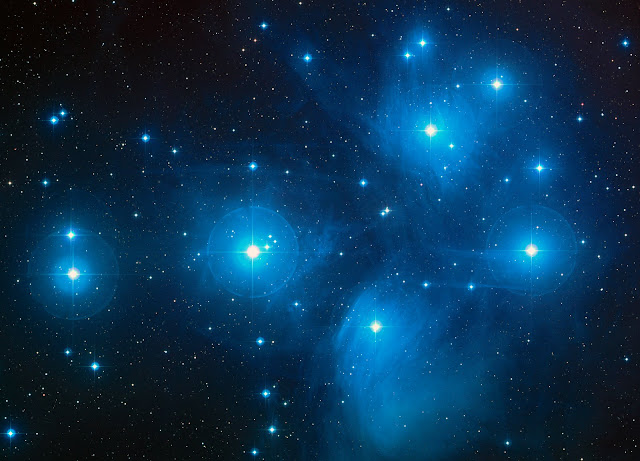Sunday, July 25, 2010
Cats Eye Nebula
From Wikipedia
The Cat's Eye Nebula (NGC 6543) is a planetary nebula in the constellation of Draco. Structurally, it is one of the most complex nebulae known, with high-resolution Hubble Space Telescope observations revealing remarkable structures such as knots, jets, bubbles and sinewy arc-like features. In the center of the Cat's Eye there is a bright and hot star, which around 1000 years ago lost its outer envelope producing the nebula.
It was discovered by William Herschel on February 15, 1786, and was the first planetary nebula whose spectrum was investigated by the English amateur astronomer William Huggins in 1864. The results of the latter investigation demonstrated for the first time that planetary nebulae consist of hot gases, but not stars. Currently the nebula have been observed across the full electromagnetic spectrum, from far-infrared to X-rays.
Modern studies reveal several mysteries. The intricacy of the structure may be caused in part by material ejected from a binary central star, but as yet, there is no direct evidence that the central star has a companion. Also, measurements of chemical abundances reveal a large discrepancy between measurements done by two different methods, the cause of which is uncertain. Hubble Telescope observations revealed a number of faint rings around the Eye, which are spherical shells ejected by the central star in the distant past. The exact mechanism of those ejections, however, is unclear.
The Pleiades
From Wikipedia
In astronomy, the Pleiades, or Seven Sisters (Messier object 45), is an open star cluster containing middle-aged hot B-type stars located in the constellation of Taurus. It is among the nearest star clusters to Earth and is the cluster most obvious to the naked eye in the night sky. Pleiades has several meanings in different cultures and traditions.
In astronomy, the Pleiades, or Seven Sisters (Messier object 45), is an open star cluster containing middle-aged hot B-type stars located in the constellation of Taurus. It is among the nearest star clusters to Earth and is the cluster most obvious to the naked eye in the night sky. Pleiades has several meanings in different cultures and traditions.
NASA Fixes Hubble Telescope
Explanation: What is that astronaut doing? Fixing the Hubble Space Telescope. During the fourth servicing mission to upgrade and fix Hubble, astronaut Michael Good can be seen attached to the shuttle's robotic arm, working in an open panel of Hubble. Far below, the terminator between day and night can be seen across planet Earth. Since Hubble was captured by the space shuttle Atlantis last Wednesday, five long space-walks have been used to fix and upgrade the aging telescope. One of the more ambitious orbital missions yet taken, the toiling astronauts have upgraded the Wide Field Camera, fixed the Advanced Camera for Surveys, repaired the Space Telescope Imaging Spectrograph, and replaced COSTAR with the Cosmic Origins Spectrograph. Numerous other general repairs included replacing batteries, gyroscopic sensors, and insulation panels. Hubble will now undergo testing as Atlantis prepares to return to Earth later this week.
Variable Star Eta Carinae
WFPC2 image of the variable star Eta Carinae
Hubble Space Telescope image showing Eta Carinae and the bipolar Homunculus Nebula which surrounds the star. The Homunculus was partly created in an eruption of Eta Carinae, the light from which reached Earth in 1843. Eta Carinae itself appears as the white patch near the center of the image, where the 2 lobes of the Homunculus touch.
The Hubble Telescope
Visit hubblesite.org.
"Since the earliest days of astronomy, since the time of Galileo, astronomers have shared a single goal — to see more, see farther, see deeper. The Hubble Space Telescope's launch in 1990 sped humanity to one of its greatest advances in that journey. Hubble is a telescope that orbits Earth. Its position above the atmosphere, which distorts and blocks the light that reaches our planet, gives it a view of the universe that typically far surpasses that of ground-based telescopes. Hubble is one of NASA's most successful and long-lasting science missions. It has beamed hundreds of thousands of images back to Earth, shedding light on many of the great mysteries of astronomy. Its gaze has helped determine the age of the universe, the identity of quasars, and the existence of dark energy."
Subscribe to:
Posts (Atom)







